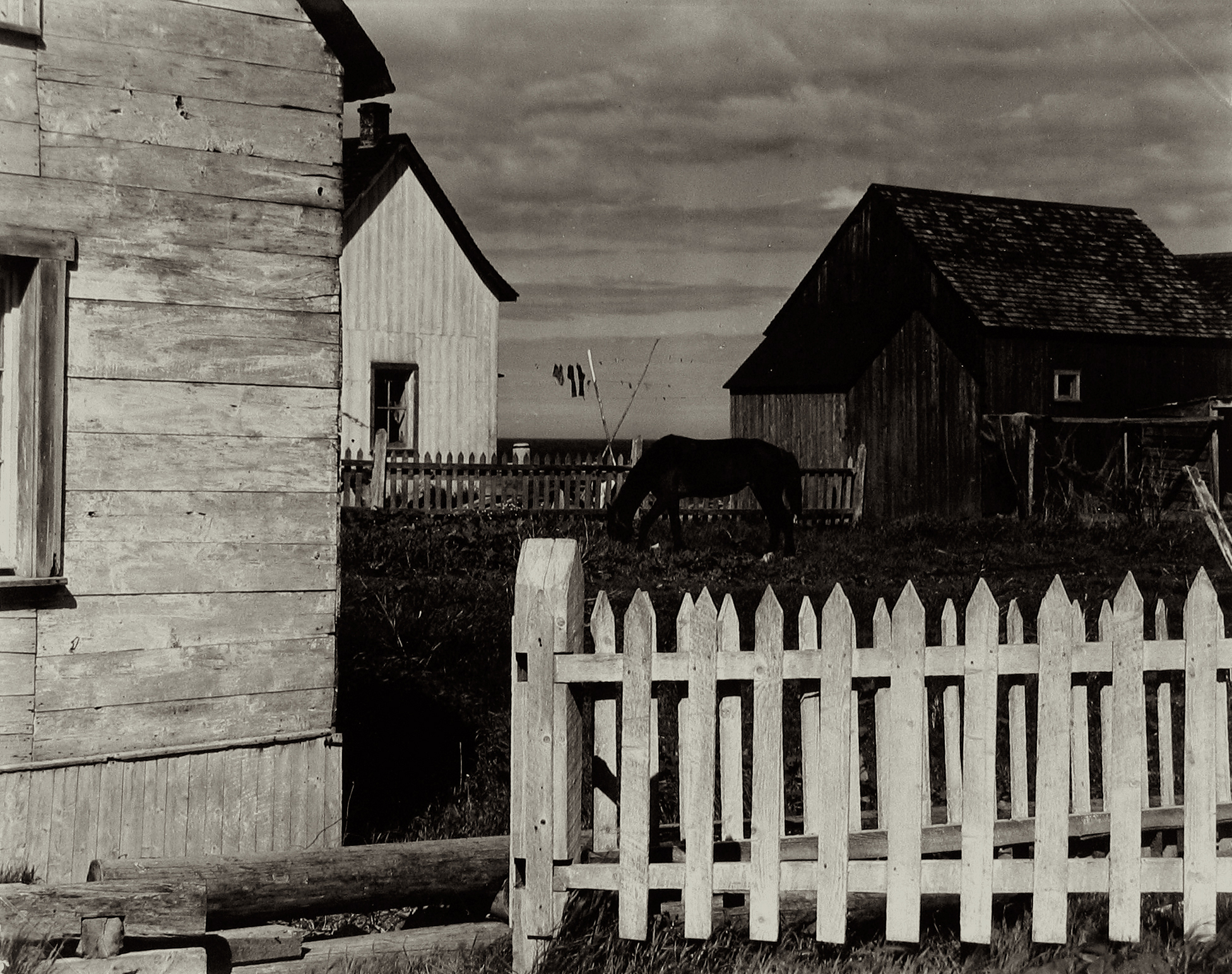
Farm, Picardy, Flanders, France, 1950
Paul Strand
Paul Strand (1890-1976) was introduced to photography as a high school student at New York City's Ethical Culture School where he studied with Lewis Hine. In 1907, the school's camera club took a field trip to Alfred Stieglitz's Little Galleries of the Photo-Secession at 291 Fifth Avenue, where they saw an exhibition of photographs by members of the Photo-Secession, including Gertrude Käsebier, Edward Steichen, Clarence H. White, Frederick H. Evans, and Joseph Turner Keiley. For Strand it was a defining moment: he decided that day to become a photographer.
In early 1915, Stieglitz criticized the graphic softness of Strand's photographs and over the next two years he dramatically changed his technique and made extraordinary photographs on three principal themes: movement in the city, abstractions, and street portraits. In 1916, upon arriving at the summer cottage his family rented every year at Twin Lakes, Connecticut, he gathered some crockery and fruit from the cottage kitchen and made arrangements on the porch, learning how to create movement and depth in the compact universe that became the picture. These photographs were the first significant abstractions intentionally made with a camera.
For a long time, Strand had wanted to make portraits of people without their being conscious of being photographed. He set out for Five Points, the heart of the immigrant slums on the Lower East Side, with his camera rigged with a false lens to distract attention. The clumsiness of the operation made it exceedingly difficult but it allowed Strand to capture his subject unaware.
In the 1930s, Strand became seriously involved with documentary film and, from the 1940s until the end of his life, he was committed to making photographic books of the highest quality. After 1950, when he relocated to France, he turned his attention to landscape, architecture, and portraiture and continued to make photographic prints of the absolute highest quality.
Although Strand is best known for his early abstractions, his return to still photography in this later period produced some of his most significant work published in six books: Time in New England (1950), La France de Profil (1952), Un Paese (featuring photographs of Luzzara and the Po River Valley in Italy, 1955), Tir a'Mhurain / Outer Hebrides[2] (1962), Living Egypt (1969) and Ghana: an African portrait (1976).